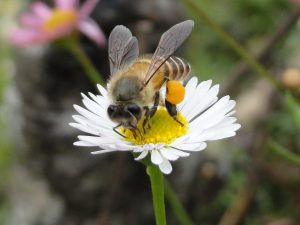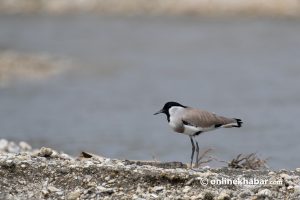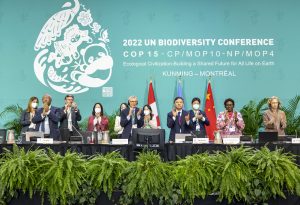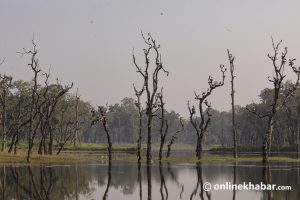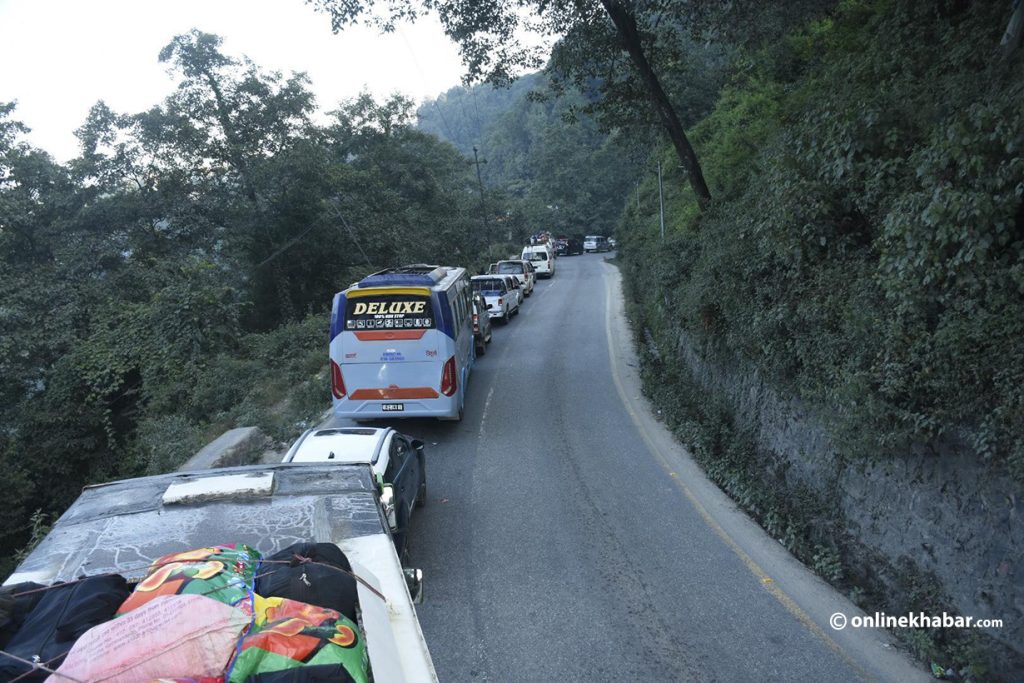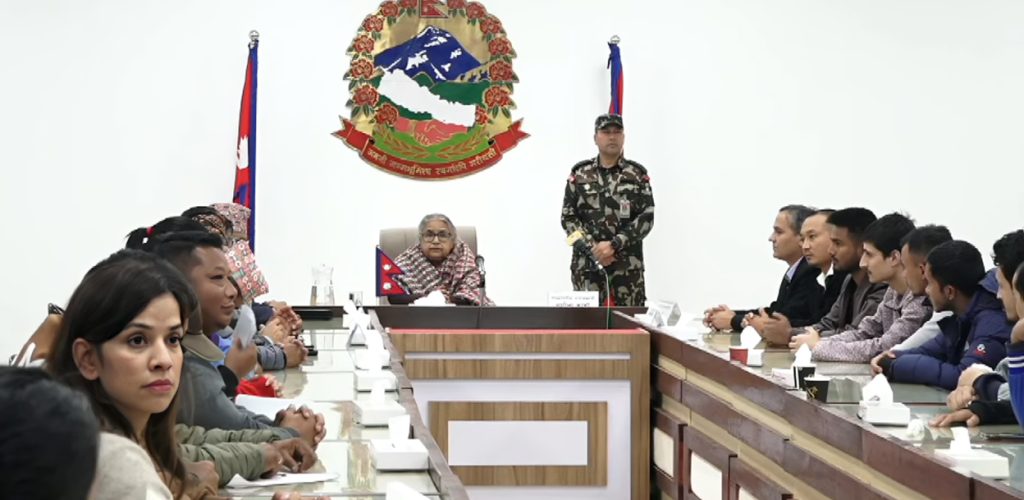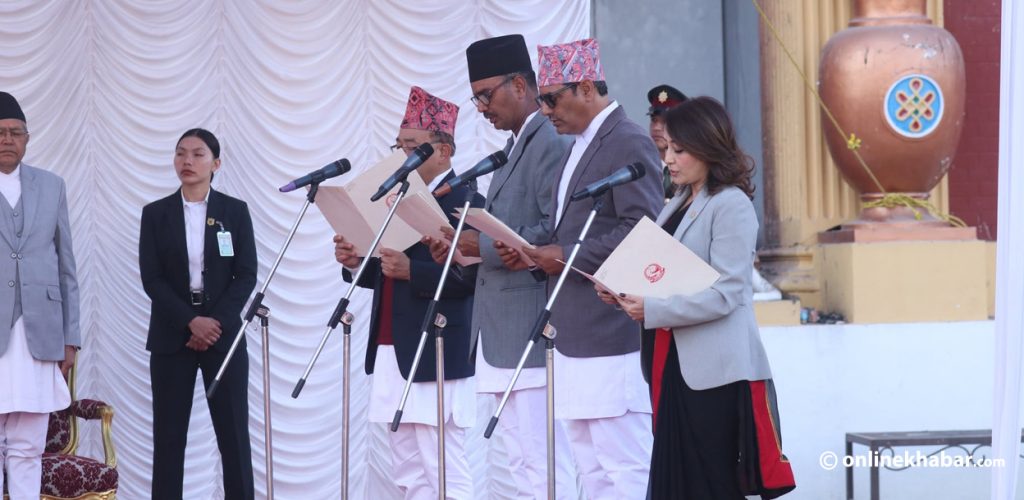
Humankind is losing the species upon which it depends to create and safeguard water, soil and air at rates never before seen in its history. This was the dramatic conclusion of the most recent assessment by the Intergovernmental Platform for Science and Policy on Biodiversity and Ecosystem Services (IPBES), which has 129 member countries.
Faced with this situation, only a new global agreement on biodiversity focusing on drastic changes to humans’ relationship with the natural world can prevent a million species becoming extinct and impacting human wellbeing.
Next year, hundreds of scientists and leaders from around the world will meet in the Chinese city of Kunming to agree on a road map to prevent this disaster. Leading that summit will be Colombia’s Ana María Hernández, head of international affairs at the Alexander von Humboldt Institute, who recently became the first woman and the first Latin American to lead IPBES.
Diálogo Chino spoke with her.
Diálogo Chino [DC]: The Aichi targets (2011-2020), established by the United Nations Convention on Biological Diversity, end in one year. What is the new road map to save global biodiversity?
Ana María Hernández [AMH]: I have been involved in all processes since we established the first strategy in 2002. In each process, we’d made very specific work plans so that countries can take specific actions to solve different biodiversity problems.
If we look at the last 20 years – with all its global strategies, programmes, demands and indicators – and then at the global IPBES evaluation, we realise that multilateral work has not really solved the problem of biodiversity loss and ecosystem services. So you have to sit down and think ‘what do we do?’
Last year at the COP in Egypt, the Convention on Biological Diversity (CBD) made a call to think differently about how to address biodiversity. If we do not adopt transformative changes – in thinking, actions, paradigms, institutions, economies – we will continue seeing the decline and this trend of increasing biodiversity loss.
DC: Does the whole strategy have to be rethought?
AMH: We have already seen that it’s necessary. If we do not have a greater capacity to evolve and innovate, human kind will face a very serious situation in the medium term.
Generally, nature accommodates itself and ecosystems are transformed. But human beings do not have that ability to adapt so quickly or so specifically. Humans face their own extinction as a species insofar as, due to loss of biodiversity and climate change, the planet is being subjected to pressures that have caused very rapid changes. The last IPBES report showed that in the last 100 years we have caused changes not seen in the last 10,000 years.
Scientific knowledge tells us that this is happening, so we cannot continue pointing to some goals that do not coincide with reality and we cannot continue wasting time in valuable spaces for discussion by allowing them adjust to political and economic interests that seek to maintain the status quo.
DC: Do you see any positives?
AMH: Yes, in several multilateral, bilateral and regional scenarios we are asking ourselves ‘what are the bottlenecks we face?’
I’ll give you one superficial example. Before, we saw a million hectares deforested and we said ‘let’s reforest’. We did not look to see what the causes of this deforestation were – if it was because of illegal trafficking, cutting for commercial wood, or the expansion of the agricultural frontier. Instead of replanting a number of trees, you have to look at what those causes are and start to solve them. Many are not environmental, but social, economic, political or cultural.
It is from the ground up where we have to devise solutions for the loss of biodiversity and ecosystem services.
DC: Is the solution for biodiversity loss also identifying people as the problem?
AMH: Let’s look at the five main causes of biodiversity loss: the transformation of territories; climate change; the introduction of invasive alien species; the exploitation of species; and pollution. What is the cause of those? The human being.
If we see that problems arise from society, solutions must also arise from social relationships. In order for any work we do to be effective, it must start with people. Not to deliver things, but to solve problems together, locally and internationally.
DC: Will the new strategy replacing Aichi take this into account?
AMH: We need a vision not only from nature, but also from society.
The Aichi goals had an excellent intention, but we see that they have not been fulfilled in their entirety. Now that we are trying to build the global framework after 2020, my concern is that there are still proposals that repeat the objective but with slight changes. [They ask]: ‘What if we increase our goal from having 17% of protected areas to 40%?’ But I think: if we didn’t achieve that goal, why would we be able to meet [the new one]? In the end, what do we measure? Is it the acres of protected areas or the effectiveness of their protection?
There is still a very classic vision about how to approach the problem but we’re beginning to talk and to contemplate more innovative visions. That is why I am sure that countries, within the framework of the agreement and with the other environmental agreements, will achieve something more innovative.

DC: Does this mean we will see solutions not only based on nature but others linked to social issues, such as poverty reduction? Will there be dialogue with the [UN’s] Sustainable Development Goals (SDGs)?
[AMH]: That is one of IPBES’s priorities. In our next work program we are going to make two major evaluations: one is four years focusing on the relationship between biodiversity and the SDGs, specifically their link to three areas – water and health, agriculture, and climate change. The other, three-year programme, is about causes of biodiversity loss and transformative changes.
DC: How should we incorporate more people in the discussion on saving biodiversity?
AMH: We must sit down with [different] sectors and see their contributions to conservation processes and the sustainable use of biodiversity, but also what the impacts are and how they are being managed. This challenge was already identified as a priority at the CDB [in Egypt]. In these spaces for joint reflection, we will also begin a shorter evaluation on the negative and positive impacts of business on biodiversity.
DC: How does biodiversity loss intersect with climate change?
AMH: We are advanced in this evaluation. We are trying to understand the impacts of climate change on biodiversity, but also how healthy ecosystems and functional biodiversity can also serve to reduce the effects of climate change, in the mitigation of greenhouse gases, in adaptation, and in community resilience. We also want to see [how the challenges of biodiversity loss can be tackled in the different scenarios that will see climate change transform our world.
Analysing the issue of climate change for me is not only seeing negative contributions but also positive ones, such as solutions based on nature. It’s about seeing the whole picture.
DC: So, some solutions are natural but others are social?
AMH: Of course, one can say that a solution based on nature restores an ecosystem so that it recovers its functions. But if as human beings we return to intervening in that ecosystem and we continue degrading it, that solution does not work.
That’s why solutions have to be ‘socio-ecological’. At the Humboldt Institute we have started talking about socio-ecological transitions for sustainability. After a very rigorous analysis by many researchers, we realised that to understand the processes of biodiversity loss in Colombia we have to understand this transformation.
DC: What’s the role of local communities?
ABH: Local communities live on biodiversity and directly depend on ecosystem services. We all depend on both, of course, but it is they who are sensitive to changes.
In cities, it does not affect us as much if a certain species of fish disappears. However, artisanal fishers’ lives and income depend on a species that might no longer be found because of climate change, invasive alien species, pollution or overexploitation. It affects their survival. They have the authority to speak, but also offer solutions from their experience and their direct relationship with the ecosystems that provide them with sustenance. Not listening to them is the first error.

DC: Will solutions come from this dialogue?
AMH: These different visions of the world have to talk to and respect each other. Learning to debate them is difficult in a country like Colombia, for example, that has witnessed decades of violence. However, to avoid the loss of biodiversity and achieve sustainable development we need dialogue and social agreements from the ground up. That applies to all contexts.
DC: Have we advanced in our understanding of the relationship between biodiversity and human wellbeing?
AMH: Yes, young people are forming an impressive critical mass that I think is part of a social and cultural revolution for sustainability. We feel the change and the momentum. As they become more aware and demand more, patterns of behaviour tend to change. It will not be a transition from one day to the next, but I take comfort knowing that these better educated and more conscious generations will soon be decision-makers.
DC: Targets to stop the loss of biodiversity are not binding. How do we persuade countries to adopt them?
AMH: If you took all the biodiversity reports from countries you’d say: ‘we are all working wonders!’ But then you look at the reports on [global] biodiversity loss and ask: why is the situation so dramatic? Countries must look inward and be more self-critical.
Part of generating constructive dialogue is having critics sit down with those who make decisions so that, instead of being bashed and playing offensively and defensively, they outline what the problem is and say what the viable and achievable solutions are.
DC: What role will China will play in the discussion?
AMH: China is at the same time a mega-diverse country and one that has been criticised – with or without justification – for negatively impacting biodiversity. As the new president of the CBD, I would expect China’s technological development, its investment in innovation and its financial capacity to make clear contributions to prioritising biodiversity. We expect a leadership role from them.
This article originally appeared on Diálogo Chino and is republished under a Creative Commons licence.





